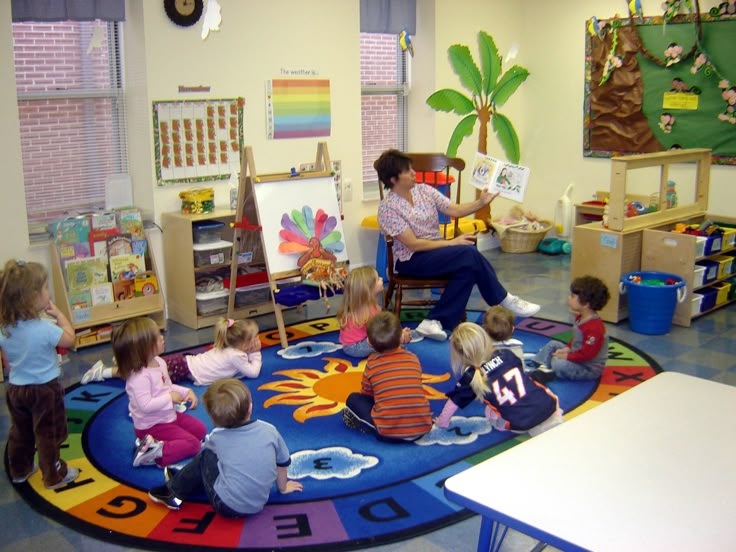Playing creativity is not merely a form of entertainment, it is also a significant ingredient in developing childhood. Once infants learn to hold their toy in their hands and play, they actually start an exciting adventure that is full of discovery and imagination. This feeling of creativity is of importance even more as children advance to the preschool stage. It allows access to learning and making others confident in ways that organized activities process tend to fail.
Consider how your baby fills a card board box with props and turns it into a spaceship or dabbing their fingers in finger paints to paint out their emotions. The activities do not only bring fun, but they are also important in developing other critical competencies like problem-solving, communication, and social interaction. Creative play in a fast-driven world of today should be seen as the way of forming a wholesome person in a time when the ability to perform in an academic and social context is vital.
Educators in nurseries in Guildford acknowledge that the best way of boosting the performance of children is through the incorporation of creative play in daily activities in the center. Learn what you can do at home or in early education programs to help nurture this rewarding experience in your child. But now we are going to enter the land of the play of ideas!
The Importance of Creative Play in Early Childhood Education
In early childhood education, the imagination thinking is very important and this is achieved through creative play. It gives the chance to children to express their thoughts and emotions. This adventure helps in emotional growth which paves the way to self-expression.
Kids acquire problem solving skills through creative play. They wade through difficulties as they establish confidence over their skills. This practical style of doing things makes learning fun and competent.
In addition, creativity activities encourages socialization among children. The kids exercise teamwork, which is necessary in their future with ideas and works shared among them.
Creative play also uses different sold activities such as drawing or structure covering physical coordination. Such activities enhance fine motor skills that are important in the future academic activities.
Encouraging them to love learning at this age preconditions the lifetime love of learning and further progress within the learning environments, like nursery in guildford.
Types of Creative Play and How They Aid in Learning
Creative play has various forms, which have distinct advantages to young learners. Play enables children to expand their roles and imagined situations. This aids them in knowing about empathy and social life.
Problem-solving skills are also promoted because kids are encouraged to construct using blocks or create using arts. They get to learn of balance, gravity and shapes through practical experiences.
The advantage of physical play is that it enhances coordination and motor skills. Dancing and climbing are activities, though they engage the mind and the body, thus increasing fitness really fast; it also encourages one to be creative.
Through cooking or playing with sand, sensory play makes them interact with their senses. Such activities enhance cognitive growth through experimenting and exploration.
All forms of creative play have the key role of enhancing the developmental stage of a child being a baby, to a preschooler. The adoption of such multifaceted forms of expression may easily transform the results of the learning process completely in favor of all children at the nursery in Guildford.
Ways to Encourage and Facilitate Creative Play in Infants and Toddlers
Promoting creativity in babies and little children is all over proper environment. It starts with a blank space providing mixed materials safely. What comes to mind are soft blocks or cloths with texture or even nature items such as leaves and rocks.
Toys that can be used to help spear imagination are open-ended toys. Allow tiny tots to stack, or build or play imaginations other wise. This instills self thinking.
Use music and movement in their everyday life. Basic tools have the ability to trigger rhythm and children can dance and express themselves freely.
Make them participate in the process of storytelling too. Take stories to life by use of puppets or props; this does not only entertain but it opens the creativity.
Restrict the use of screens as well. Rather than to consume passively encourage them to be active and to explore themselves and experiment in their way- this will help inculcate curiosity and problem solving naturally.
Implementing Creative Play in Preschool Curriculum
The preschool learning environment can be handcrafted with creativity making the children learn with some fun and excitement. This is a way that promotes critical thinking and problem solving.
Teachers will be able to develop the themed play stations which stimulate the imaginative situations. An example is the use of a “grocery store” activity that enables children to engage in an activity of role-playing either as a shopper or a cashier as they acquire knowledge of basic math concepts in the process of socializing.
Another great opportunity to explore is art projects. Offering different resources helps children to be free in their expression and contributes both to creativity and fine motor skills.
Additional stimulation of a child in his/her imagination could be provided by telling stories combined with puppetry. Playing out stories does not only entertain them, but causes them to imbibe language models and narrative sequence naturally.
The routine replacement of activities keeps the interest going. New themes will provide new experiences of discovery, which means that learning experiences are linguistic and invigorating within the nursery in Guildford environment.
The Role of Parents and Caregivers in Supporting Creative Play at Home
Caregivers and parents are important in fostering creative play in the home. Having a question-answer approach will greatly influence the learning experiences of your child.
Begin with an assortment of open ended materials such as blocks, art materials, or nature items such as leaves and stones. They help children to imagine and share their thoughts without limitations. As children get access to various resources, even more, they are prone to use their creativity in imaginative situations.
One should as well allow them to have unorganized play that is not screen or time-bound. The provision of self-directed exploration and independence to children helps to inculcate confidence in the child.
When necessary, participate in the fun. Creativity should be valued, and what better way to do it than taking part in their games and bonding with them in the process? Use open-ended questions as to what they are doing; this will help them to think more, and also they will be able to solve problems.
It is also helpful to have certain hours in the week when you are engaging in creative tasks only. It could be jointly creating something or pretending and playing, but all this time forms the memory and improves the developmental skills.
They can also get some support by engaging the local resources such as the nursery programs in Guildford. Most nurseries conduct workshops that can be used to further the experience of children in school and home in terms of creativity.
Your active participation in them will go a long way in ensuring there is an environment in which creativity can be embraced, which is indeed a critical aspect of holistic learning among young children.














Leave a comment